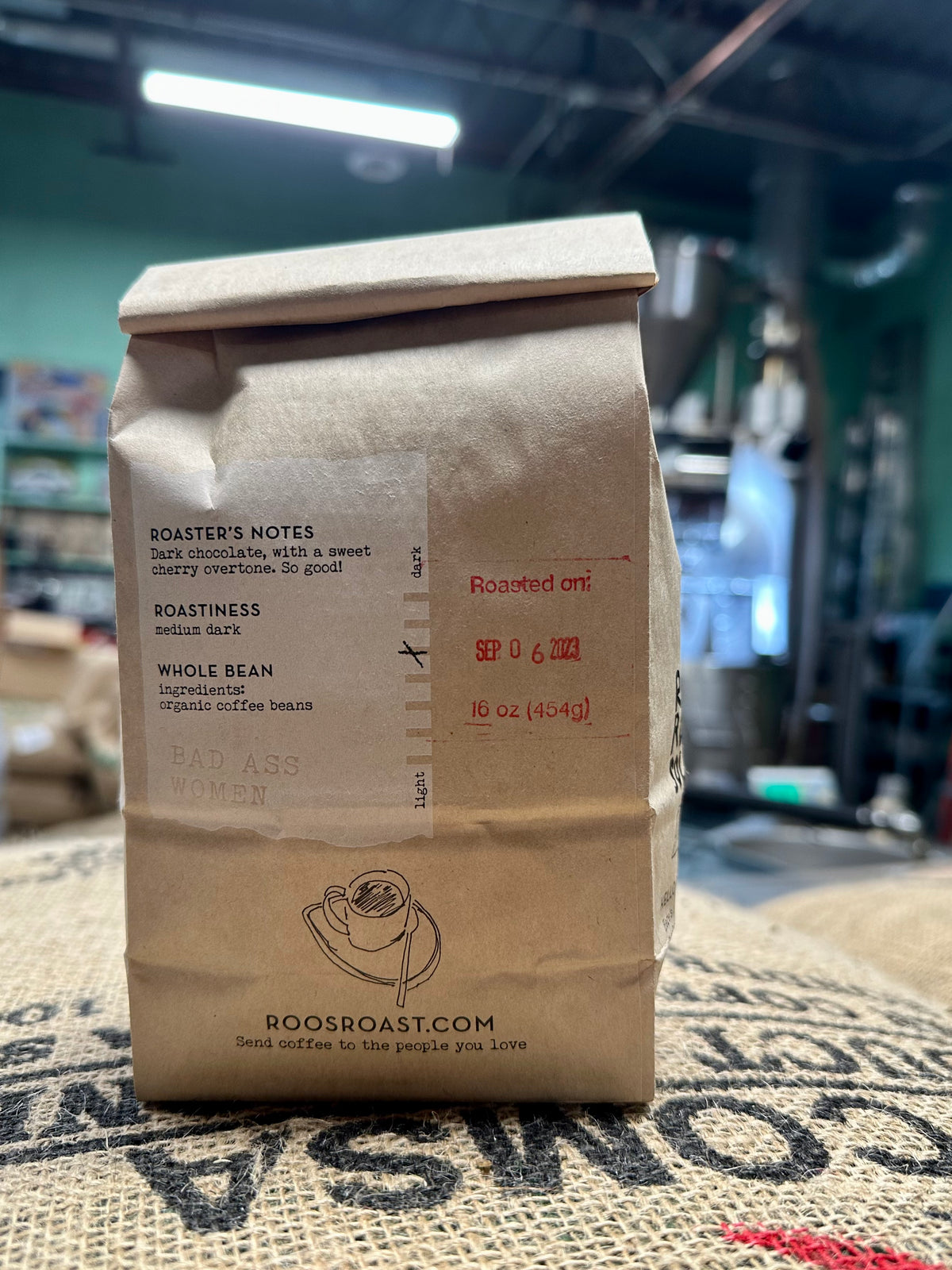Watch & Learn
Chemistry 101:
the lifecycle of a green coffee bean
1. Roasting
A crucial step in coffee production! This is where raw green coffee beans are heated to develop flavor and aroma.
You wouldn't want to brew coffee before it is roasted, trust us.
2. Cooling
Newly roasted coffee beans are emptied out of the Loring Roaster and rapidly cooled with air.
You gotta cool those beanies down to stop the roasting process and prevent over-roasting!
3. Resting
This is the part where you watch Kieran's video and LET THOSE BEANS REST!!
Beans must rest to release carbon dioxide that built up during the roasting process. If you don't let them rest, you will miss out on the full flavor potential of your cup of coffee.
4. Grinding & Brewing
You let your beans rest for 5-7 days past the roast date, yes? Excellent, you can now go forth and make your cup of coffee with the confidence that it's not going to taste weird. Enjoy!
What is a roast date anyway?
Flip your coffee bag around and you'll see a stamped date. That's the roast date!
It's literally the day that our production crew put green coffee beans into our Loring Roaster and, through fire, heat and other chemical magic, turned those beans into brew-able, delicious coffee.

Why roast dates are confusing:
- A roast date is NOT the date you should brew your coffee beans!
- Instead, take that roast date and count forward five to seven days (yes, there's a little math involved but we believe in you). That's how long your coffee needs to REST and DEGAS before brewing!
- That future date is the day your coffee will be READY to brew!
Advanced Chem:
While roasting, there are two important chemistry moments: First crack and second crack (literally, there's a cracking or popping sound you can hear while roasting!)
- First crack: Water vapor breaks the cell walls within the bean.
- Second crack: C02 breaks the cell walls within the bean.
Light roast coffee is just that, "lightly roasted." It doesn't hit second crack! And that means MORE C02 is trapped in the bean and needs MORE time to release.
Dark roast coffee still needs time to degas, but not as much as light roast.
What this means for you, dear humble at home coffee drinker:
- When you brew freshly roasted coffee, the water and C02 are mixing to create carbonic acid, which you don't want in your coffee!! Your coffee will taste metallic and acidic! Let the beans rest so you can get the best cup of coffee possible.
Let's Recap!

- We want our coffee to be relatively fresh but there is such a thing as TOO fresh.
- The flavor of your bag of coffee beans will peak 5 to 7 days after roasting.
- When you brew freshly roasted coffee, the C02 is still trapped in the bean so your cup of coffee will have an acidic, metallic taste because of the carbonic acid combining with water. Yuck.
So be patient! Let your beans rest! You will be rewarded with a more full flavor profile.
(and fun facts to talk about at parties!!)




